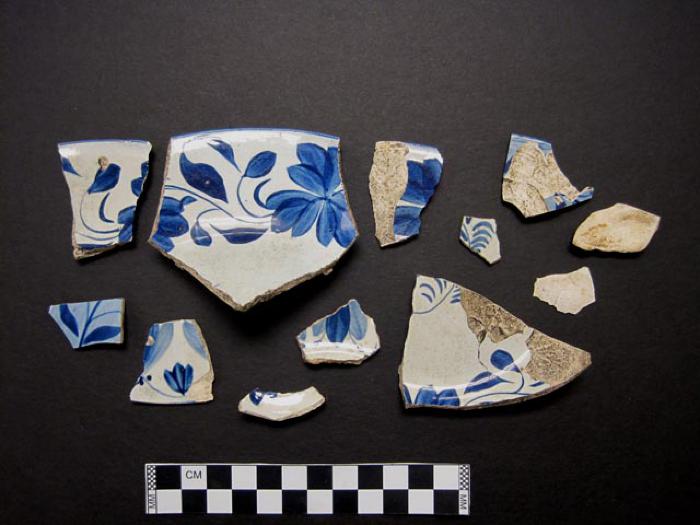Plate — Qantaq (N), Alutaq (S)

In classical Alutiiq society, dishes were made from wood, grass, and bone. People ate from decorated bowls carved from a solid piece of wood or food containers created by pegging a bentwood rim to a wooden base. Drinking cups were woven from grass or spruce root, and some archaeologists think that Alutiiq people used pieces of whalebone as cutting boards or plates.
Western-style dishes, including “china” plates, were introduced to Alutiiq households in the historic era. Native people adopted tea drinking from Russian fur traders, along with English ceramics and Chinese porcelains. Many of the ceramics that made their way to Kodiak were purchased from English manufacturers by the Hudson’s Bay Company and then sold to the Russian American Company, which distributed them in Alaska. The value of these early ceramics is illustrated by the care Alutiiq people took to mend broken pieces. Craftsmen drilled holes in ceramic fragments to literally tie cracked and broken plates back together.
For Kodiak archaeologists, ceramics fragments can be very helpful in dating historic Alutiiq settlements. Each of the distinctive patterns printed on plates, bowls, cups, saucers, and teapots has a unique history. For example, the Spode and Copeland Company’s blue rose pattern was manufactured between 1825 and 1833, but their ivy pattern dates to the period spanning from 1845 to 1865. After 1868, the Alaska Commercial Company imported a distinctive, brightly painted, thick ware often featuring a cornflower design.
